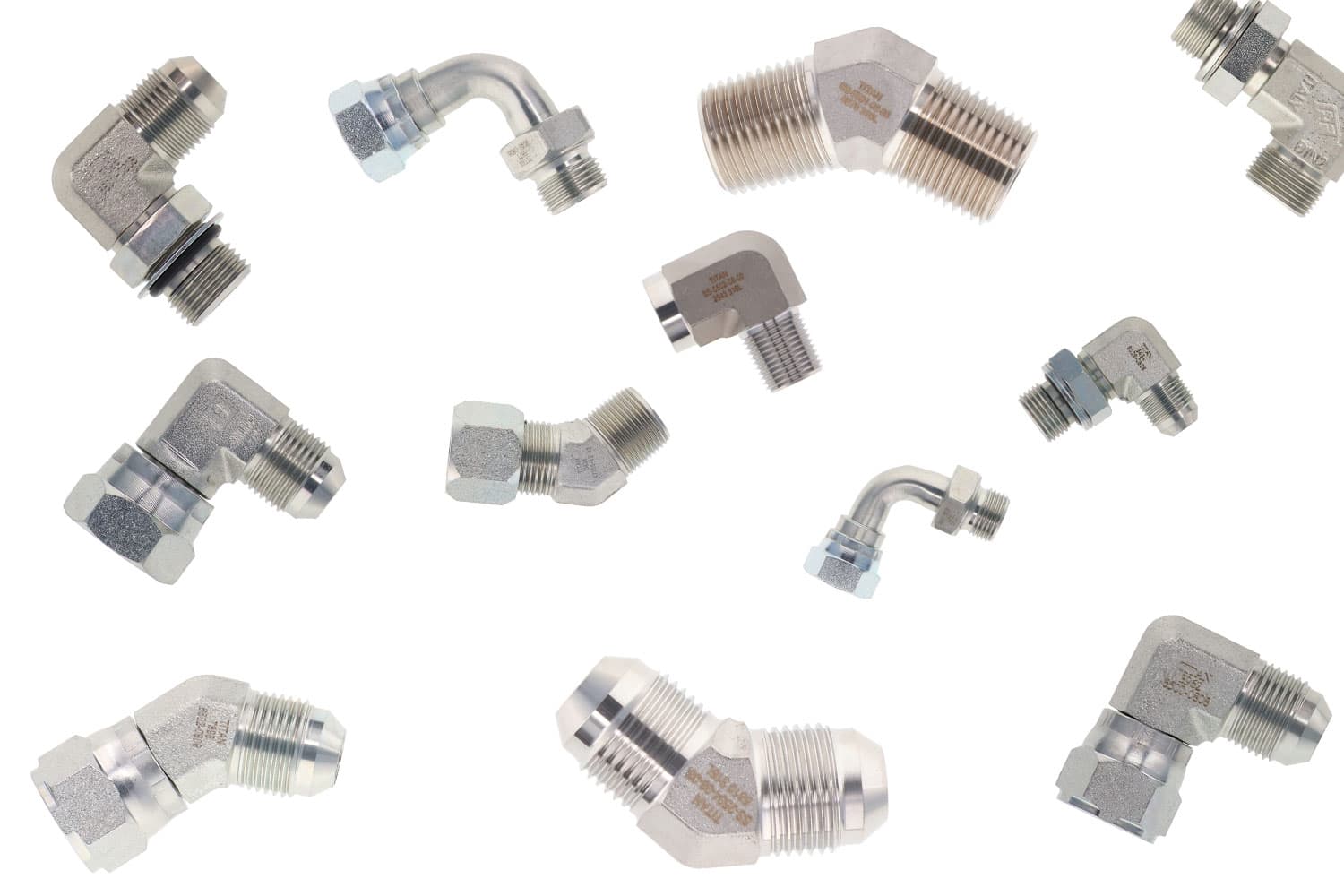Elbow Fittings and Their Applications in Hydraulic Systems

Introduction
Elbow fittings are crucial components in hydraulic systems, used to change the direction of fluid flow. Understanding the different types of elbow fittings and their specific applications can help in selecting the right one for your hydraulic system, ensuring optimal performance and longevity.
1. 45-Degree Elbow Fittings
A 45-degree elbow fitting changes the direction of the fluid flow by 45 degrees. These fittings are used when a mild change in direction is needed, minimizing the pressure drop and potential turbulence in the system. They are commonly used in applications where space constraints prevent the use of a 90-degree elbow. Industries that frequently use 45-degree elbow fittings include automotive, manufacturing, and HVAC systems.
2. 90-Degree Elbow Fittings
A 90-degree elbow fitting is the most commonly used type, changing the direction of fluid flow by 90 degrees. Ideal for making right-angle turns in piping systems, these fittings are essential in compact systems where space-saving is critical. They help in routing hydraulic lines around obstacles. Industries such as industrial machinery, agriculture, construction equipment, and marine applications widely use 90-degree elbow fittings.
3.180-Degree Elbow Fittings
A 180-degree elbow fitting, also known as a U-bend, reverses the fluid flow direction. Used to create a U-turn in hydraulic systems, these fittings are helpful in tight spaces where the fluid needs to be redirected back along its original path. Industries like automotive exhaust systems, heating systems, and hydraulic testing rigs often utilize 180-degree elbow fittings.
4. Street Elbow Fittings
A street elbow has one male and one female threaded end, allowing for direct connection to another fitting without the need for an additional coupling. Street elbows are used for connecting two different sizes of pipe or for connecting pipes at an angle without additional fittings, making installations more straightforward and less bulky. Common industries include plumbing, oil and gas, and chemical processing.
5. Reducing Elbow Fittings
Reducing elbows change the pipe diameter and direction simultaneously. These fittings are used when there is a need to change the flow direction and reduce the pipe size in a single fitting, streamlining the system design. Water treatment, petrochemical, and hydraulic systems requiring different pipe sizes are typical users of reducing elbow fittings.
6. Swivel Elbow Fittings
Swivel elbows have a rotatable connection, allowing for movement without disconnecting the piping. They are used in systems where flexibility and movement are needed, such as in mobile equipment and machinery with moving parts. Industries like aerospace, robotics, and heavy machinery often require swivel elbow fittings.
Material Considerations
Stainless steel elbow fittings are known for their corrosion resistance, durability, and strength, making them ideal for harsh environments and high-pressure applications. Brass elbow fittings, on the other hand, are used for their excellent corrosion resistance in water and mild chemicals, suitable for low to medium pressure applications. Plastic elbow fittings are lightweight and resistant to many chemicals, making them useful in low-pressure and non-critical applications.
Conclusion
Choosing the right type of elbow fitting for your hydraulic system depends on the specific requirements of your application, including the direction of flow change, space constraints, pressure ratings, and environmental conditions. By understanding the different types and their uses, you can ensure that your hydraulic system operates efficiently and reliably.
If you need assistance in selecting the right elbow fittings for your hydraulic system, contact us at Hydraulics Direct. Our experts are here to help you find the best solutions tailored to your needs.